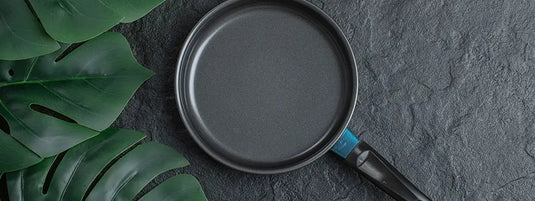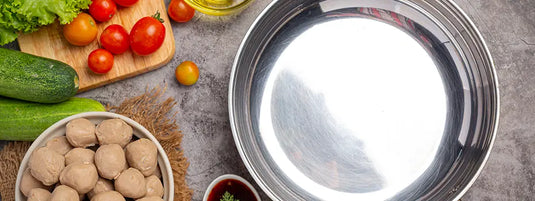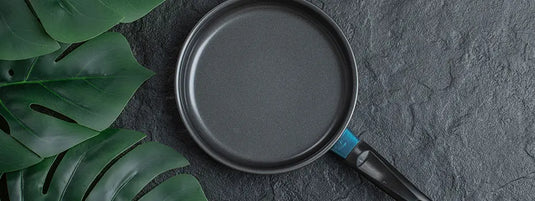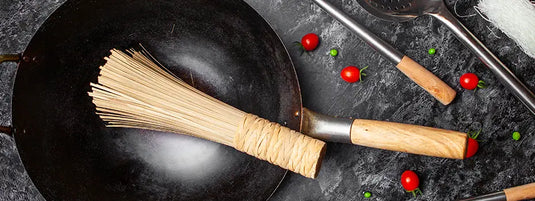Updated: · Kichera Editorial Team · Kichera
Reviewed by: Materials & Culinary Testing at Kichera
Quick Answer
Solid ceramic cookware (fully ceramic-built) is generally safer and more inert than ceramic-coated metal pans. Solid ceramic is lead-free, chemical-free, and stable at cooking temperatures. Ceramic-coated aluminum or steel, on the other hand, relies on a thin sprayed layer that can wear off over time, exposing the base metal.
- Best for long-term safety: Solid ceramic cookware (no metal core)
- Budget-friendly alternative: Ceramic-coated aluminum/steel — safe at moderate heat if coatings are intact
- Not recommended: Low-cost coatings with unknown compositions or no lab testing
Explore Kichera Ceramic Cookware Collection for lead-safe, PTFE/PFAS-free options.
Understanding Solid Ceramic vs Ceramic-Coated
Solid Ceramic cookware is made entirely of kiln-fired clay or mineral compounds. The cooking surface and body are the same material—no metal or coatings. It’s naturally non-reactive, safe for acidic foods, and eco-friendly when glazed correctly.
Ceramic-Coated Cookware is usually aluminum or steel with a sprayed-on “ceramic” layer (a silica-based sol-gel). It mimics non-stick performance but can degrade under high heat or abrasive cleaning.
Key difference: Solid ceramic is a full-body structure; ceramic-coated is a thin surface treatment over a metal base.
Comparison: Solid Ceramic vs Ceramic-Coated Cookware
| Feature | Solid Ceramic | Ceramic-Coated Metal |
|---|---|---|
| Base Material | 100% ceramic (mineral/glazed) | Aluminum or steel base + sol-gel layer |
| Chemical Safety | Lead-free, PTFE/PFAS-free, inert | Safe when new; coating can degrade over time |
| Heat Tolerance | Medium-high (avoid thermal shock) | Medium (avoid >450°C) |
| Durability | Can chip if dropped but won’t peel | Coating may scratch or wear in 1–3 years |
| Non-stick Behavior | Naturally slick but not “Teflon-smooth” | Very smooth initially; may lose glide with time |
| Induction Compatibility | No (unless base added) | Yes (if magnetic layer included) |
Verdict: For pure safety and longevity, solid ceramic wins. For convenience and cost, ceramic-coated is acceptable if from a trusted, lead-tested brand.
Recommended Kichera Ceramic Cookware
- Best for everyday sauté: Solid Ceramic Fry Pan — lead-safe and non-reactive for tomato or lemon dishes.
- Gentle simmering: Ceramic Casserole Pot — ideal for soups, stews, and low-oil cooking.
- Budget-friendly non-stick: Ceramic-Coated Skillet — safe under moderate heat if cleaned gently.
Compare with Triply Stainless Steel or Cast Iron options if we want higher heat tolerance.
Safety & Use Tips for Ceramic Cookware
- Heat gradually—avoid placing cold ceramic on high heat or hot pans under cold water.
- Use wooden or silicone utensils to prevent surface scratches.
- Check for third-party lead and cadmium testing (all Kichera ceramics are certified lead-safe).
- Avoid aerosol sprays; use a few drops of oil instead for a healthier, lasting surface.
FAQs
Is ceramic cookware safe for health?
Yes, solid ceramic cookware is among the safest choices—non-reactive, free from PFAS/PTFE, and lead-safe. Choose trusted brands that provide lab certification.
Is ceramic-coated cookware toxic?
Good-quality coatings are PTFE-free and safe if not overheated or scratched. Cheap, untested coatings can degrade—prefer certified brands like Kichera.
Solid ceramic vs ceramic-coated—which lasts longer?
Solid ceramic can last decades if handled carefully. Ceramic-coated lasts 2–4 years depending on cleaning and heat use.
Can ceramic cookware go on induction?
Pure solid ceramic is not magnetic, so it won’t work on induction unless it has a metal base.
Explore our full cookware safety cluster: Cast Iron vs Carbon Steel · 304 vs 316 Triply Stainless · Safe Pan Temperatures · How to Season Cast Iron




